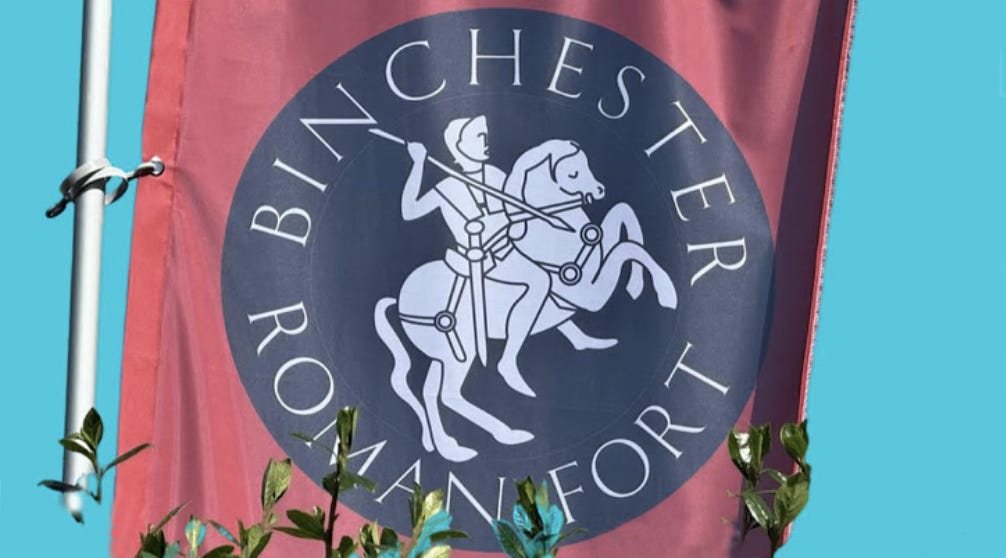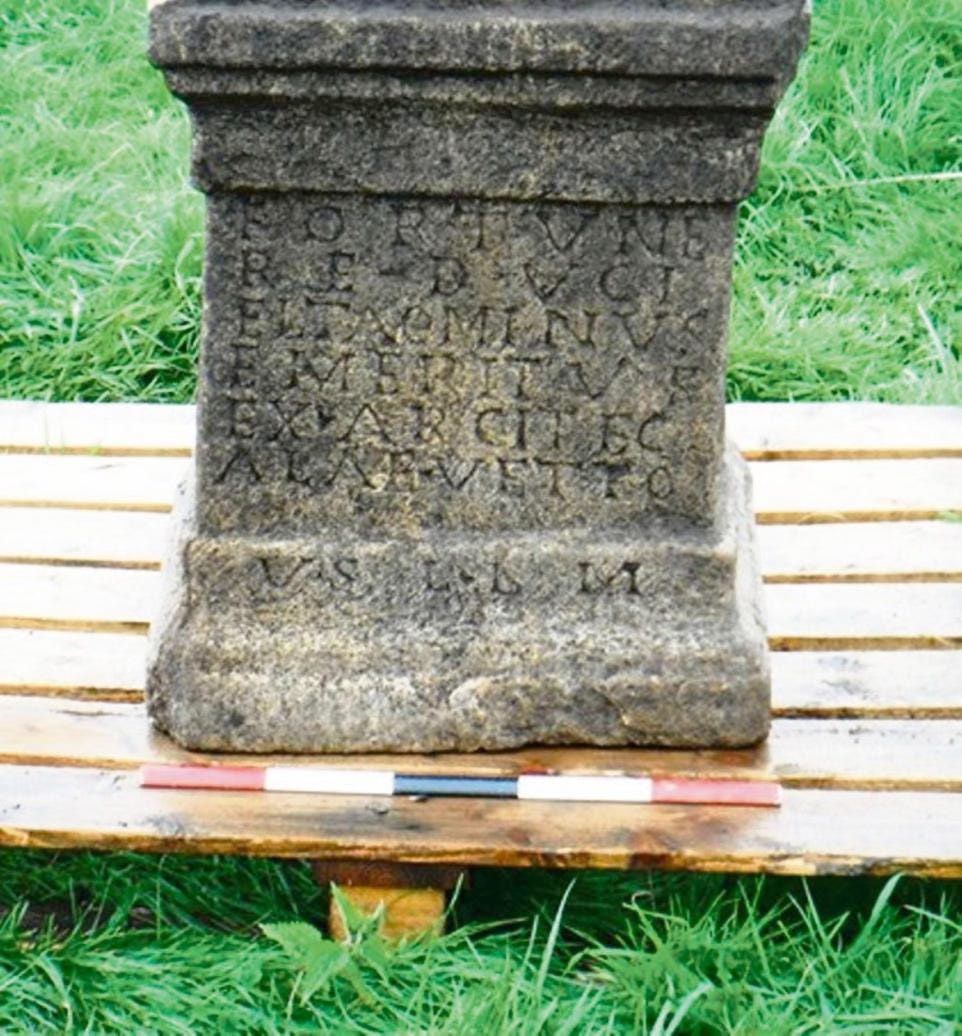Arthur and the Battle of Fort Guinnion
New evidence confirms Arthur’s connection with Binchester in County Durham
The best discoveries about Arthur are often the least obvious ones. It was not until 1981 that new evidence emerged that supports the account of Arthur’s battles recorded in the Historia Brittonum – but it is not immediately clear that it does.
The Historia Brittonum is usually dated to the early ninth century, although it is evidently a compilation of earlier sources, many reaching back into the seventh century and earlier. One of its sections preserves a list of the names of a series of battles that Arthur reportedly fought at. But the list has often been questioned as evidence because the battles are recorded as if they may have been taken from a poem.
Some of the names of the battles in the list rhyme and the battle list was evidently crafted so as to give most stress to the eighth and twelfth battles. It mentions many sites that cannot be identified with certainty today and it reads as if it reflects three verses from an old poem. A literal translation of the list is:
The first battle in which he was engaged was at the mouth of the river Glein.
The second, third, fourth and fifth were on another river, called Dubglas, and it is in the region of Linnuis.
The sixth battle, on the river called Bassas.
The seventh was a battle in the Forest of Celidon, that is Cat Coit Celidon.
The eighth was a battle near Fort Guinnion where Arthur bore the image of the Holy Virgin, Mother of God, upon his shoulders, and put the pagans to flight that day, with great slaughter, through the power of our Lord Jesus Christ and Holy Mary his mother.
The ninth battle was at the City of Legion.
He waged a tenth battle on the banks of a river called Tribruit.
The eleventh battle took place on the mountain called Agned.
The twelfth was the battle on Mount Badon, in which in a single day nine hundred and forty were felled by Arthur. And no one achieved this but he himself alone, and in all wars he emerged the victor.
The place-name Celidon evidently rhymes with Guinnion, Legion and Badon, but names of genuine historical battles should not be expected to rhyme. It is also not immediately clear how old the battle-list is. Linguistically, it looks to date to the eighth century, although some of the rhymes the list seems to preserve suggest that it may be older than that. So can the battle-list be trusted as evidence? Is it historically reliable?
More speculation about Arthur’s battles has arisen than just about any other aspect of the early sources that mention him. The names of places recorded in the battle-list have been linked with sites from all over Britain. The battle of Mount Badon is also recorded by St Gildas and in the Welsh annals, but new evidence indicates that the battle of Fort Guinnion is genuine too.
The list in the Historia Brittonum starts off uncontroversially, the site of the first battle not being a matter of much contention. There are two rivers called Glen still in Britain today, one in Northumberland, the other in Lincolnshire. The locations of the other battles, however, are much less obvious.
It is not immediately clear where the battles on the River Dubglas took place or where the River Bassas was. Over ten rivers with names similar to Dubglas are known from Britain, but none of them are located in a region ever called Linnuis. And no river called Bassas is attested otherwise.
The Forest of Celidon is more readily locatable as it seems to have been in Scotland. But it is treated in later Welsh sources as if it were the Enchanted Wood of Enid Blyton books – a wondrous place beyond the limits of the normal world.
Things become a lot more regular with the eighth battle as the list names an obviously military site. The passage also records much more than just the name of the battle and the reference to Mary and Jesus doesn’t sound like information taken from a poem. Several Welsh poems have survived that list the names of battles won by the king they praise, but like most bardic poetry, none of them make any reference to Christianity. It is also obvious given the rhetoric about Mary and Jesus that the Battle of Fort Guinnion was considered very important. But where was it exactly? Where was Fort Guinnion?
The answer seems to have been revealed by an inscription found in 1981 at Poole’s Cavern, near Buxton in Derbyshire. The inscription is preserved on a lead sealing that was discovered among many other Roman-period finds in the cave. Lead sealings were added to packages in Roman times to indicate where they had come from – like a modern return address, but more akin, physically, to a wax seal. The sealing from Poole’s Cavern reads Vinoen, an abbreviation of Latin Vinoensis ‘from Vinovia’. Vinovia is the name of the Roman fort at Binchester in County Durham.
It had long been suspected that Fort Guinnion might be Vinovia, but the place-name Vinovia would be expected to become Guinwy in Welsh, not Guinnion. The Buxton inscription is the missing link between Vinovia and Guinnion.
There are two ways in which place-names first attested during the Roman period are recorded in the Historia Brittonum: as direct renderings in Welsh or as adjectival or otherwise slightly modified forms.
Winchester is recorded in the Historia Brittonum as Guinntguic. The first element Guinnt- evidently reflects Winchester’s Roman name Venta and the second part -guic continues Latin vicus ‘village’. Similarly, Silchester is called Celemion, a Welsh form of Silchester’s Roman name Calleva enlarged by an adjectival ending -ion equivalent to Latin -ianus.
Vinoen would have an expected adjectival equivalent Vinoianus ‘Vinovian’ in Latin and Vinoianus would have an expected Welsh reflex Guinion – or, given Guinntguic, Guinnion.
The most interesting aspect of the spelling in the Buxton inscription is that it seems to preserve a dialectal pronunciation paralleled in another inscription associated with Vinovia. The Roman fort at Binchester was excavated most recently from 2009-2015 and proclaimed the ‘Pompeii of the North’. Visitors to the site may disagree with the description – no wall paintings or ashen bodies were discovered during the dig. At the end of the Roman period, the fort at Vinovia seems to have first been used as a slaughterhouse and then an Anglo-Saxon cemetery. But no archaeological evidence of a battle has been discovered at Binchester.
In 2013, however, an inscribed altar was excavated from the ruins of the Roman fort. It is dedicated to Fortuna Redux – a goddess who ensured that travellers returned safely from their journeys – and it records that it was raised by a man called Eltaominus. Eltaominus looks like a strange name at first, but it preserves the same sound change as Vinoen does – the loss of -v- between two vowels. An earlier form of the element Eltao- (with the -v- retained) is recorded in the name of the Corieltauvi, the ancient British people who lived in the East Midlands in Roman times.
The Historia Brittonum appears to preserve a Welsh form of the name that Vinovia was known by in Roman times by people who actually lived there. It is the kind of evidence you would expect to discover only if the names in the battle list reflect a genuine historical memory. It seems very likely that the Battle of Fort Guinnion really did occur and that it happened in the early sixth century near Binchester in County Durham. It’s also fairly obvious why Arthur would have been fighting Saxons at Binchester in the early sixth century. Vinovia is the fort that the Romans built to guard Dere Street, the main north-south Roman road, where it crosses over the River Wear.
Linguistic analysis of the inscriptions from Buxton and Binchester demonstrates that at least some of the battles recorded for Arthur in the Historia Brittonum must be genuine. Arthur seems to have been a northern Briton who first came to fame because of battles he fought against the first generation of Anglo-Saxon settlers in Northumberland, Tyneside and County Durham during the early sixth century.







Why is it that I think that Arthur's story begins and ends in Gloustershire, which is so near the Welsh border? This work detailing the battles and the origins of the speculations definitely adds to the search for Arthur. You have chosen a topic which so many find intriguing.